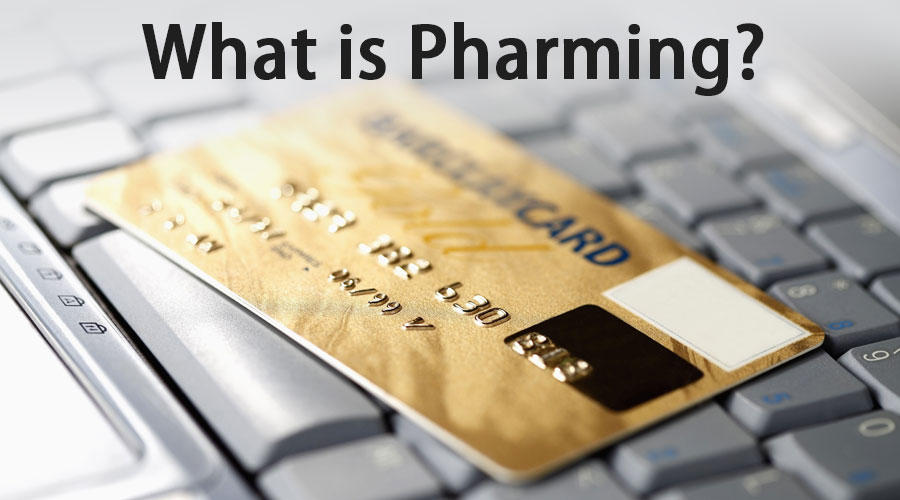Updated August 19, 2023

Introduction to Pharming
Pharming is one of the various cyber-attacks that attackers practice. Pharming simply redirects the user from accessing the requested site to a similar fake site. In Pharming, attackers infect the DNS to resolve to a wrong or fake website IP address instead of the actual IP address. The infected DNS system is generally referred to as “poisoned.”
The internet has undergone significant evolution since its development. Not only has there been an evolution in terms of usage and speed, but there has also been a transformation in how it is misused. There are always people who are looking for some loopholes using which they could enter the whole system. Once entered, they could exploit the resources and could easily misuse them. Several ways or mechanisms are using which exploitation is done. Commonly used methods include phishing, cyberbullying, drive-by attacks, password attacks, SQL injection attacks, and cross-site scripting (XSS) attacks. Pharming is a common type of attack. Let me explain what it is.
What is Pharming?
Suppose we try to explain in simple words. In that case, we can say that Pharming is a simple cyber-attack that works on the logic of redirecting the user to a different URL or website when a user tries to use access the original website. Pharming is a relatively new work. Here, two characters, the “Ph” keyword Pharming, are derived from the term “Phishing.” Phishing is another type of cyber attack where intruders try to receive user credentials by making a fake look-alike page of original popular websites. Usually, it is the role of DNS servers to resolve requested domain names to respective website IP addresses. However, an infected DNS server resolves the domain name to fake site IP addresses. Once users land on such fake websites and enter their credentials, the system captures and exploits their information for nefarious purposes.
Understanding
There are several ways by which Pharming is generally practiced. One common way is to update or infect the user’s local system host files. They generally infect personal computer host files. An attacker generally sends them some malicious code that infects their local system host files. The host files’ role is to convert user-requested URLs into several manipulated strings, which the computer uses to access websites.
Another common form of Pharming is infecting DNS directly. The role of DNS is to resolve the user’s requested domain name to a respective website IP address. An injected DNS wrongly resolves incoming requests, redirecting the user to malicious pages.
What is the Purpose of Pharming?
By now, it is quite clear what Pharming is generally used for. Like any other cyber-attack, Pharming too is practiced with the wrong intention. The basic minds behind Pharming try to get user-sensitive information such as usernames and passwords. Fraudulent transactions, such as banking transactions, utilize the collected sensitive user information.
Another common use or purpose of Pharming is generating webpage traffic. This generates revenue by generating traffic on a particular website domain. Redirecting more and more traffic to the wrong website generates increasing revenue.
How do you Recognize Pharming?
There are several ways to recognize Pharming. However, there is no full-proof mechanism by which we can say that following a particular set of operations will keep users safe from Pharming. Let us try to look at a few different ways by which we could detect fake websites, at least on a broader scale.
Look for secure websites only – Always check secured websites once you are migrated to a particular website. Your website should follow Https:// protocols. For example, the website should start with https://www.WEBSITE.com. If the website follows the secured HyperText Transfer Protocol, only proceed to enter your valuable credentials.
Now let us know that apart from the https protocol, what other ways can we detect fake websites?
- Defacements: Look for any defacement like attackers generally remove the original logo with the similar-looking logo
- Suspicious pop-ups: Check if the website is showing unwanted ads and pop-ups.
- SEO spam: Comments containing website URL is another way to detect vulnerable website
How do you Prevent Pharming?
There are several methods available to avoid Pharming completely. However, using malware and anti-virus has no impact on it. Using such tools against Pharming is pointless since, in most cases, the attack occurs online while navigating URLs, regardless of the host system.
Now let us look at how Pharming could be prevented.
- Do not click on URL directly: To navigate a website, do not open a URL by clicking on a URL directly contained in emails or something. If you wish to visit a website, then always open a new tab or browser and manually enter the desired website link you want to visit.
- Avoid clicking ads on websites: Do not click on ads and pop-ups randomly appearing on different websites. These ads could be the potential source for the same.
- Check for https keyword: As explained earlier, always use websites with secure protocols. Never try to access those websites which are not following secure protocols.
Conclusion
There are several ways by which attackers do cyber attacks. Pharming is one such mechanism. They generally try to find loopholes in the system and then try to get benefit from such loopholes by misusing them. Typically, due to our negligence, we always visit any website and use it without paying attention to the authenticity of the visited website. In other ways, we must detect and avoid using such malicious websites.
Recommended Articles
This has been a guide to What is Pharming? Here we discussed the introduction of some basic concepts, purpose, and how to prevent Pharming. You can also go through our other suggested articles to learn more –



